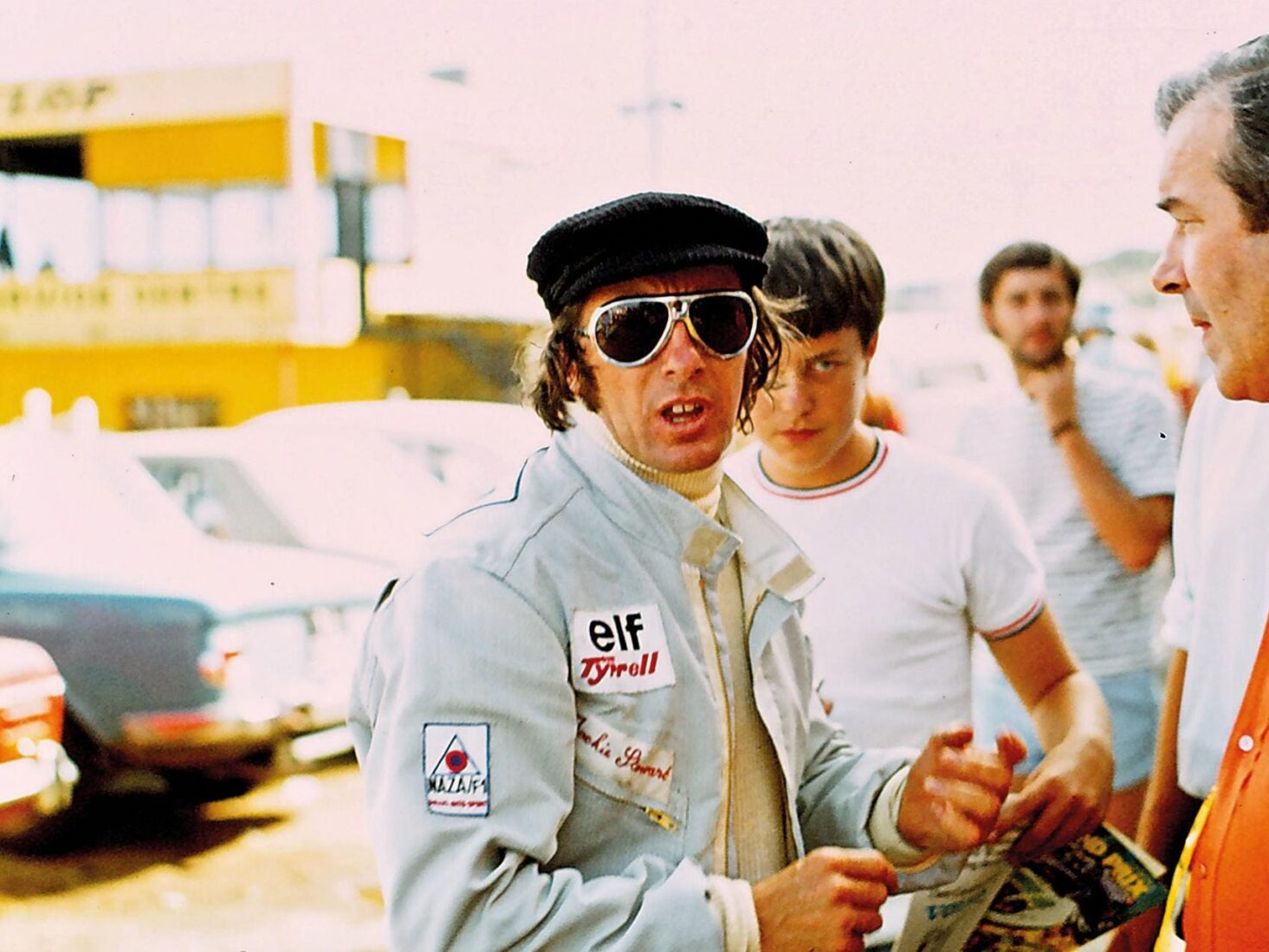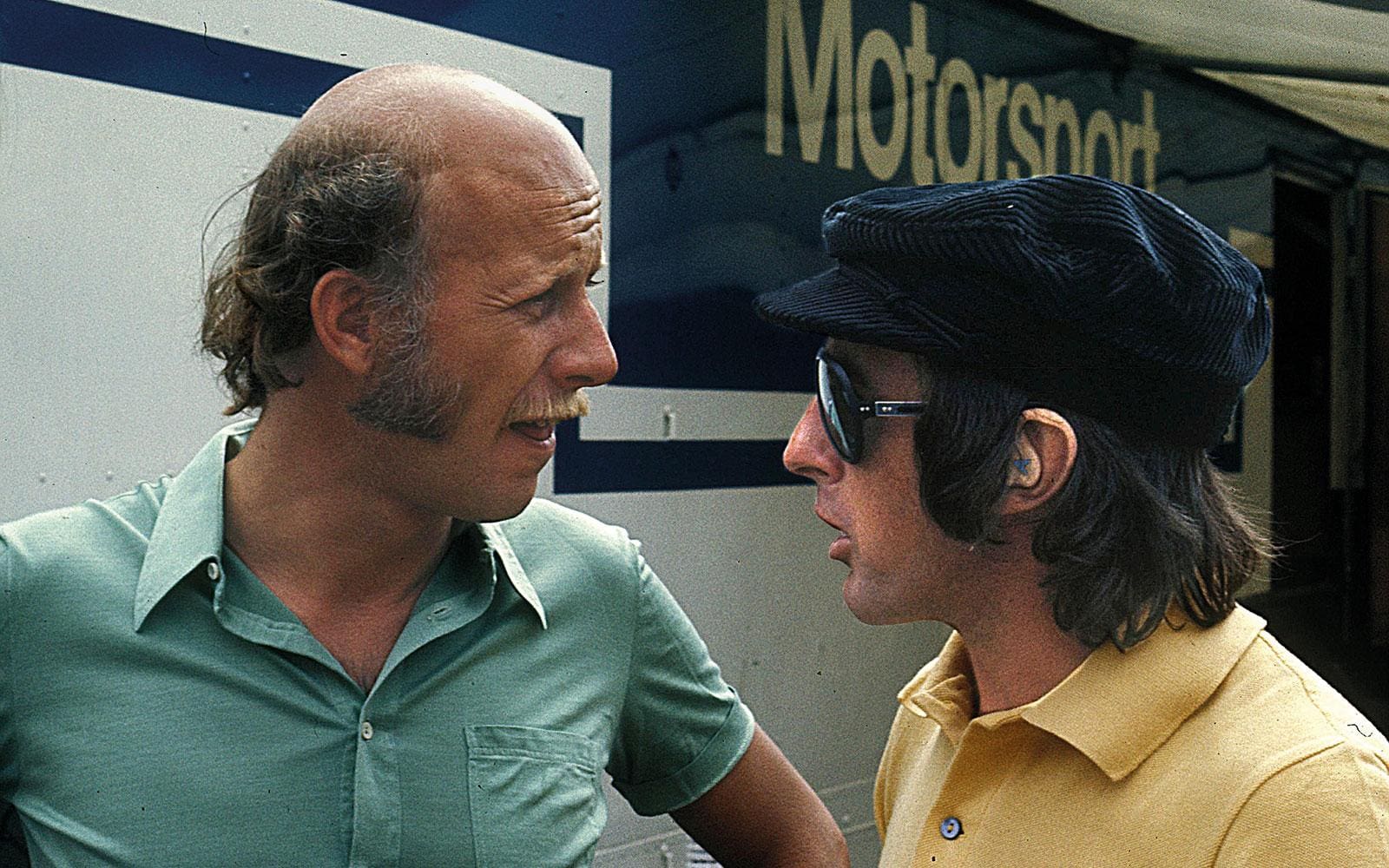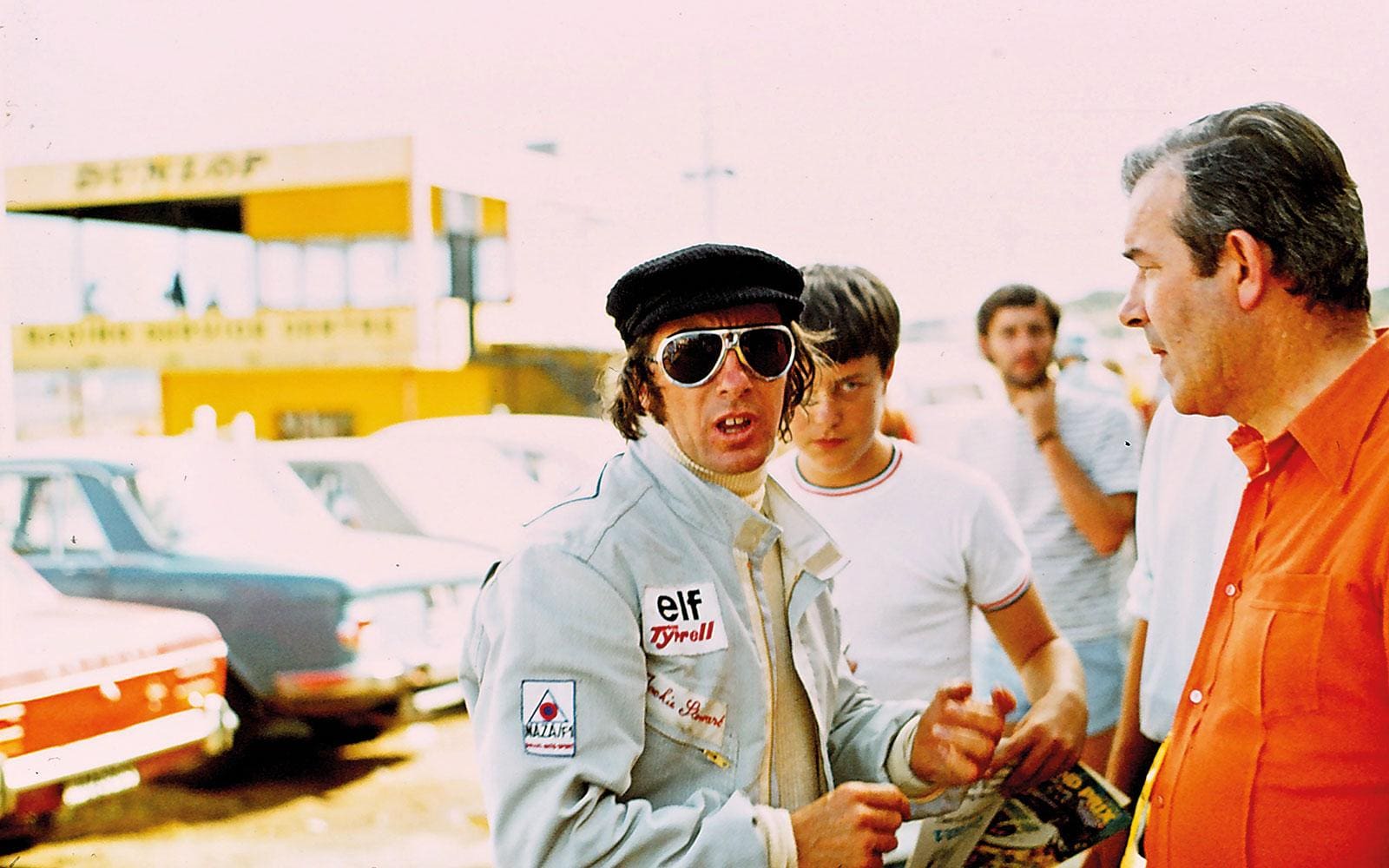
Sir Jackie Stewart: The man who won’t be stopped
Luxury London sits down with Formula One's 'Flying Scot' to discuss an accomplished past and an ambitious future
There was a time in Formula One, not so long ago, when fireball crashes like the one Romain Grosjean endured at the 2020 Bahrain Grand Prix were the norm, not the exception. That time was the 1960s and early ’70s, when drivers would risk it all in the name of entertainment and sport. A time that would later be referred to as ‘the killer years’.
“In many respects, it was a wonderful period,” says Sir Jackie Stewart, in the comfortable surroundings of the Formula One Paddock Club ahead of the British Grand Prix. The 82-year-old looks dapper. Dressed in his signature Royal Stewart tartan trousers, matching flat cap and a crisp, white shirt, he is still every bit the paddock icon.
“But on the negative side, the death toll was really ridiculous,” says Stewart, earnestly. “In 1968, you had a driver killed for four consecutive months on the same day. Jim Clark died on 7 April. After that, Mike Spence was killed on 7 May, followed by Ludovico Scarfiotti [8 June] and Jo Schlesser [7 July]. It was crazy and a completely different world back then.” Over the course of his career, Stewart witnessed the death of more than 50 of his fellow drivers and, by his reckoning, a driver who raced for five years had a two-thirds chance of being killed in a crash.

Stewart refused to be a bystander in the deathly debacle. On 12 June 1966, Stewart pulled onto the start line of the Belgian Grand Prix. Fresh from his win on the streets of Monaco only 21 days earlier, Stewart was hopeful he could replicate the same success on the 14.1-kilometre circuit that wound its way through the Belgian countryside. It was not to be. A sudden downpour had left surface water on the track and by the end of the first lap, more than half the field had crashed out due to the poor conditions. “It was heavy, heavy rain – at the first corner, eight cars had come off the track. Luckily, I wasn’t one of them.”
The Scott survived the first few corners before his luck ran out. He left the track at the notorious Masta Kink, something he would later refer to as “by far the most difficult corner in the world”. Believed to have been doing more than 165mph when he left the track, Stewart’s fragile BRM P261 hit a telegraph pole and then a building before landing upside down in a ditch while high-octane race fuel rushed into the cockpit, drenching Stewart’s rudimentary race overalls.
“I hit this river of water and I wasn’t completely conscious, so I don’t remember the actual impact,” he admits. “While I don’t remember that exact moment, I know what I did. I went off the road, hit a telegraph pole, went through a woodcutter’s hut and smashed it to smithereens – then I landed upside down in a ditch.” Despite the substantial impact, against all odds, Stewart was relatively unharmed by the initial crash. The most torturous moment was yet to come.

“The telegraph pole did most of the damage and it ruptured the fuel tank which came in on me, so I was soaked in high-octane fuel. In those days, it was real juice – like aviation fuel but with more stuff in it!” Thankfully, Stewart wasn’t the only driver whose luck had run out at that moment. Close by were British racer Graham Hill and American Bob Bondurant, who’d both come off the track not far away.
“Bondurant and Hill went off in the same river of water, but there was nothing else to hit – I had knocked it all down – so they were OK. And when they got to me, they had to borrow spanners from a spectator’s car to get me out and to remove the steering wheel. Nowadays they all come off but they didn’t back then.”
Once out of the car, Bondurant and Hill saw to the Scotsman, pulling him away from the twisted wreck of his BRM and into the relative safety of a nearby barn, where they stripped his saturated clothes to relieve the burn of the highly flammable fuel against his skin. “In those days the fuel itself burnt you.”
By the time Stewart’s teammates had battled to free him from the cockpit, 25 minutes had passed. It took an ambulance two hours to get him to a medical centre. “When the paramedics arrived, they laid me on the ground on a canvas stretcher and I can still remember seeing the cigarette butts scattered around me.” Despite arriving at the track’s rudimentary medical facility, the comedy of errors continued. Another ambulance arrived to take him to a nearby hospital, but it got lost en route, at which point Stewart’s team manager took the executive decision to hire a private jet to fly Stewart to St Thomas’ hospital in London. Miraculously, the Scotsman emerged from the crash with only a broken shoulder and ribs.
From that moment, Stewart made a stand against the appalling safety standards and lack of medical facilities at racetracks around the world. While his campaign proved unpopular with many in the paddock, particularly the sport’s promoters and circuit owners, progress was made.

“Grosjean’s crash was a fantastic demonstration of what has happened since my day,” says Stewart. “I was watching the race at home and all I could think of was that he was a dead man, and then the next thing you see is the guy getting out the cockpit and struggling to get over the barrier. Then there’s a marshal helping him over it and then he stood up and walked to the medical car. And then when he got to the medical centre, they knew exactly what to do with him. It was just a wonderful example of how things have moved forward – in my day, he would never have gotten out of the car.”
Off the track, Stewart’s greatest motor racing legacy is, undoubtedly, the way he spearheaded health and safety campaigns that saved the lives of countless drivers. On the track, the achievements of the man nicknamed the ‘Flying Scot’ are downright astonishing. Stewart managed to claim three Formula One World Championships between 1969 and 1973, with 99 race starts before he retired in 1973, aged just 34. In 2020, The Economist ranked him as the fourth-best racing driver in history, based on the relativity between car quality and driver skill. Apparently, news of the accolade hadn’t yet reached Stewart.
“Well, thank you very much,” he says raising an eyebrow. “They must have had Fangio up there … and maybe Sterling, Schumacher and Senna. But that’s four, so I guess one of them must have not made the cut!” he says, with a wry smile. Fangio was indeed ranked in first place, in front of Jim Clark and Alain Prost, Michael Schumacher was fifth, followed by Lewis Hamilton in sixth position. Senna was ranked eighth.
In contrast to many of today’s drivers, Stewart was undaunted by other forms of motor racing. “If you were driving in Formula One, you were likely to already be driving in touring cars, GT cars, Formula Three cars, Indy cars. You’d be doing all sorts of things!” In 1966, less than two weeks before Stewart’s sizeable crash at Spa, the Scot flew across the Atlantic for his first shot at the Indianapolis 500 in Indiana. Like Formula One, the 500-mile race was wrought with danger and, on the first lap, 11 of the 33 contenders were taken out of the race in an accident. Stewart swerved clear of the incident to take the lead.

Extending his lead by more than a lap, Stewart looked set to claim his first Indy win on his debut race. But, with just ten laps to go, the car lost oil pressure and Stewart was forced to park up and walk back to the pits, handing victory to his friend, and fellow Formula One driver, Graham Hill. Stewart entered the same race the following year but was forced to retire from engine failure.
It’s been 50 years since Stewart’s second Formula One championship title, yet, in his personal life, the 82-year-old shows no signs of slowing down. After his wife of 59 years was diagnosed with dementia in 2016, Stewart set up his own charity, Race Against Dementia. “Its aim is to beat the illness,” he says forcefully. “To create either preventive medicine, to begin with, and then a cure in my lifetime. No one in more than 40 years has managed to achieve that, but look what they’ve done for cancer – there are four cancer PhDs for every one for dementia, so that’s why we’re sponsoring young PhDs from all over the world.”
Working with partners in motorsport, business, technology, arts and medicine, the charity identifies and financially backs the most talented early-career researchers, enabling them to pursue innovative ideas that might not get funded by more mainstream charities.
As we chat today, Stewart’s wife is sat beside him. It’s clear that the two are inseparable, just as they were in Stewart’s racing days, when Helen would stand on the sidelines, timing his laps on a stopwatch. “Helen was always there, supporting me through everything,” says Stewart. “She was razor-sharp; brilliant with that watch… but today we’re facing a new challenge, the hardest I’ve ever had to face.”
Plainly, Stewart’s appetite for a fight remains diminished. As with his racing career, failure is an option he won’t consider.
Sir Jackie Stewart was interviewed in his capacity as a Rolex ambassador. To donate to Race Against Dementia, visit raceagainstdementia.com









